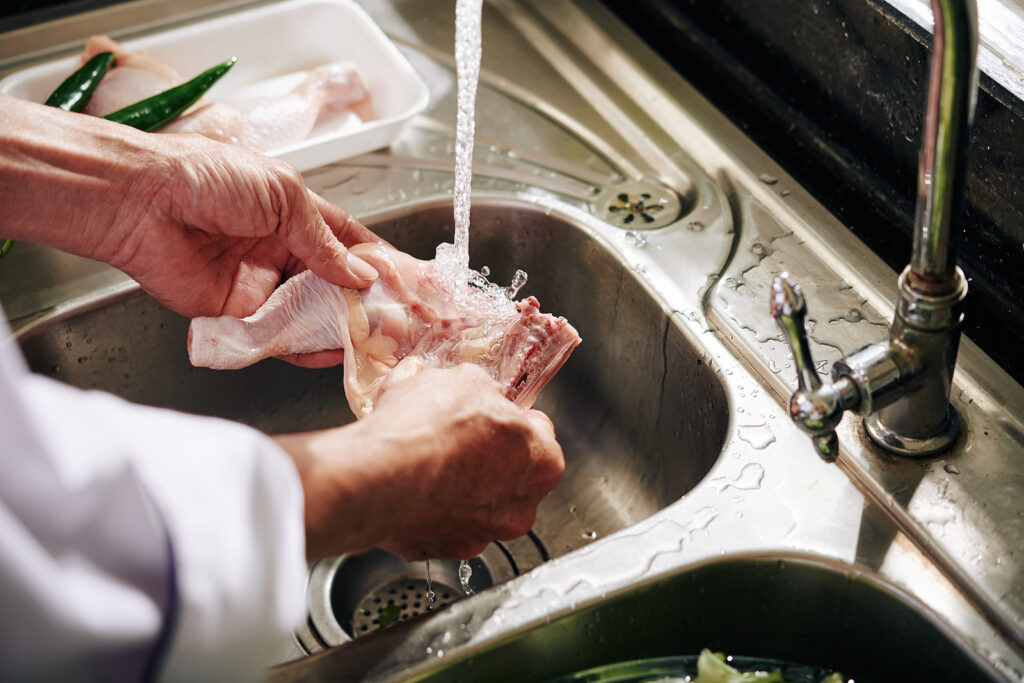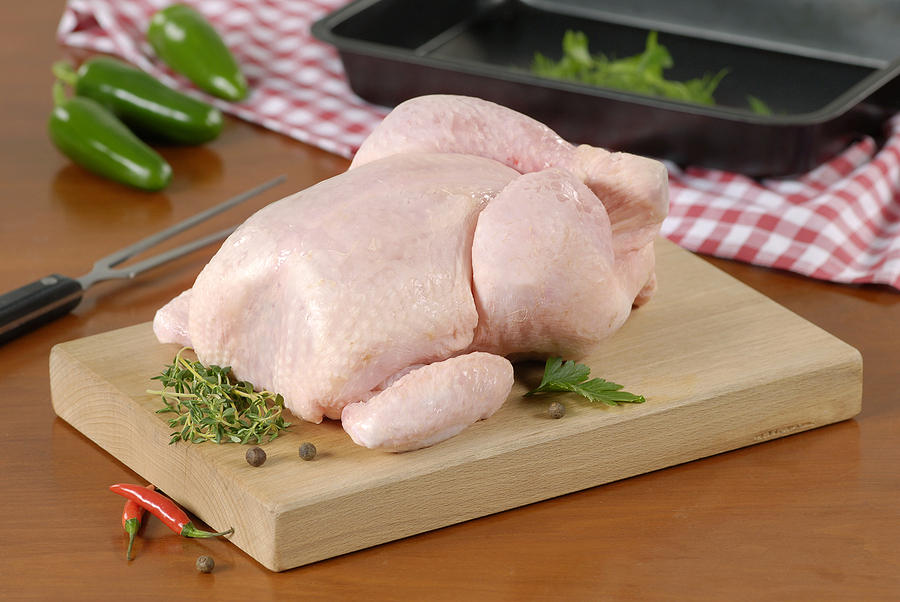You eat a lot of chicken. You love chicken. Your whole family loves it. So, you must be doing something right; right? Well, let’s check. So many people make mistakes when preparing and cooking poultry, specifically chicken but other birds as well. You can up your chicken cooking game by learning the top chicken cooking mistakes and adjusting them to meet even the most professional chef’s standards.
Continue below to review some of the most common mistakes made when cooking chicken and how to avoid them.

Don’t Do This When You Cook Chicken
Rinse With Water
Do you have the urge to rinse your chicken breasts or tenderloins before you cook them? Professional chefs would cringe at the sight. Not only does rinsing do nothing to remove bacteria or otherwise de-sterilize your chicken cuts, but it will pose the risk of splattering raw chicken juices around the sink and surrounding kitchen, thus contaminating the sink, dishes, countertops, and more. Next time, simply pat your chicken with dry paper towel.
Over-Marinate
Many people love the results of a citrus marinade. Something about the citric notes and properties pair so well with chicken. But be careful not to make the mistake of over-marinating in citrus juices. This will only cause the meat to take on a mushy or mealy texture, which is very unappetizing. Over-marination can include marinating for too long or marinating using too much citrus juice.
When using a lime, orange, lemon, or grapefruit-based marinade, stick with a 2-hour marker. Longer does not mean better in all cases of marinading. For buttermilk or yogurt marinades, stick with a 24 hour time limit. Otherwise, you run the risk of over-tenderizing the chicken, which can have an unappealing texture and mouthfeel.
Use Only Boneless Skinless Chicken
So many people love to stick to what they like best, which is often the most convenient cut. Boneless, skinless chicken breasts certainly fit this bill. But do not make the mistake of using boneless skinless chicken for every chicken dish. Some chicken meals are better prepared using darker, richer cuts of the bird, such as slow-cooker recipes, soups, and stews.
Over-Stuff the Frying Pan
If you are cooking chicken in the cast iron or frying pan, do not make the mistake of over-crowding the pan. Putting too many chicken cuts in the pan at one time will do a lot to ruin your meal. First, the heat-distribution will be unbalanced, causing the chicken to cook much slower and unevenly. Also, over-stuffing the pan will prevent you from easily flipping and maneuvering each piece. Next time, use a larger skillet or cook your chicken in multiple rounds.
Use Expensive Olive Oil for Fried Chicken
If you love fried chicken and looking to step your game up next time you make it yourself, do not waste your time on expensive olive oil. Fried chicken does not need a fancy oil to taste great, so do not spend the money on the top shelf stuff. Not only will it likely burn and smoke up your place, but it will do nothing to enhance the flavor. In fact, it can make it taste bitter. Stick with your basic vegetable oil for fried chicken. If you insist on using olive oil, use a light one.
Cut Immediately
Many people make the mistake of cutting into their chicken immediately after cooking it. But this is a big no-no! The juices inside the chicken need time to percolate from the center to the skin. This will give you a juicy, mouthwatering chicken. If you cut into it right away, the juices will just flow out and you will have a dryer result. Instead, transfer the chicken to a wood cutting board and loosely cover it with foil. Let it sit for 15 minutes and then start slicing!
Simultaneously Pan Fry With Vegetables
You do not want to toss in stir-fry veggies with raw chicken into the same pan and cook them. Not only will the cold, raw chicken reduces the heat of the pan, thus increasing cooking times, but the juice will overwhelm the stir-fry vegetables, essentially boiling or steaming them. The result is cold, mushy, soggy stir fry. Instead, cook your chicken first, and just before it is done, toss in the veggies and seasonings.
Are you craving some juicy, delicious chicken entrees made to perfection? Visit English Ivy’s Downtown Pub and Eatery for our famous Monday 50 cent chicken wing special! Wash down your spicy, BBQ, or dry rub chicken wings with a frosty beverage from our Monday drink special menu, like $6 Moscow Mules and ½ Price Premium Wine!
Related Posts:
The 3 Quickest Ways to Thaw a Frozen Chicken
Top 4 Tips for Using Cast Iron Skillets
Tips for Cooking a Delicious Beef Roast


